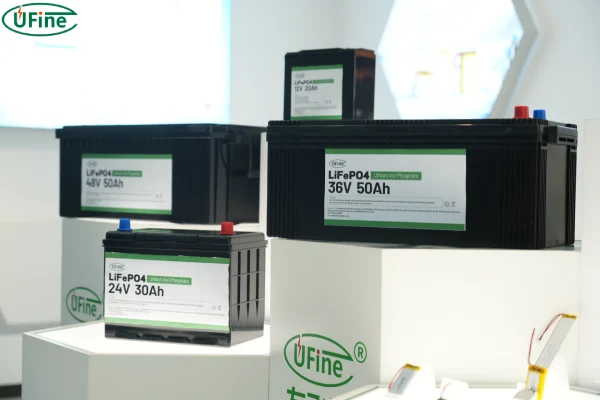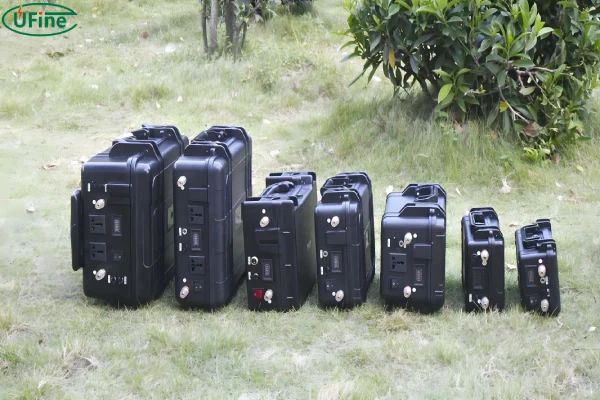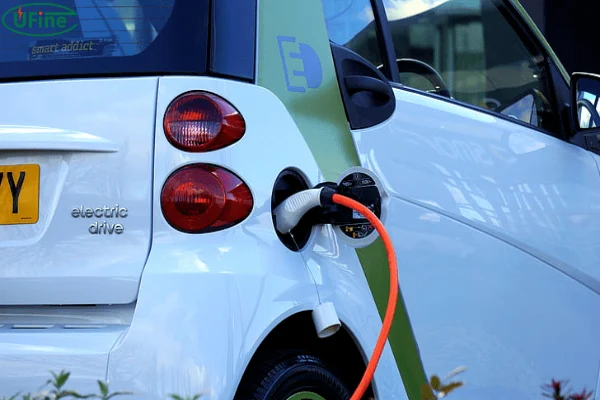We live in a world powered by electricity. From the lights in our homes to the devices in our pockets, electricity is the lifeblood of modern society. But what happens when the power goes out? Or what about powering up a world that’s moving towards renewable energy sources like solar and wind? This is where large batteries come in.
Large batteries are more than just power packs; they’re energy storage solutions that are transforming the way we live, work, and travel. They’re the silent powerhouses behind everything from electric vehicles to solar energy systems, and they’re playing a crucial role in shaping a more sustainable future.
This article will delve into the fascinating world of large batteries, exploring their different types, their unique characteristics, and their diverse applications. We’ll uncover why they’re so important, how they work, and what makes them so crucial for a changing world.
Part 1. Large battery types
Large batteries come in many shapes and sizes, each with its own strengths and weaknesses. Understanding these differences is key to choosing the right battery for your needs. Here’s a closer look at some of the most common types:
-
Large Lithium Batteries: These batteries are the workhorses of the modern world. They’re known for their high energy density, meaning they can store a lot of energy in a relatively small space. This makes them ideal for applications where size and weight are critical, like electric vehicles and portable power systems. Lithium batteries also have a long lifespan, meaning they can be charged and discharged thousands of times before losing significant capacity. This makes them a reliable and long-lasting power source.
-
Large Lithium Polymer Batteries: These batteries are similar to lithium batteries but have a flexible design, allowing them to be molded into various shapes. This makes them perfect for applications where space is limited or where a custom fit is needed. They’re also known for their high discharge rate, meaning they can deliver power quickly and efficiently. This makes them ideal for powering high-performance devices like drones and electric bikes.
-
Large LiFePO4 Batteries: These batteries are known for their safety and durability. They’re less prone to overheating and catching fire compared to other lithium-ion battery types, making them a safer choice for applications where safety is paramount. LiFePO4 batteries also have a long cycle life, meaning they can withstand thousands of charge and discharge cycles without significant degradation in performance. This makes them ideal for applications where reliability is essential, like solar energy systems and electric vehicles.
Part 2. Large battery voltage
The voltage of a battery determines how much power it can deliver. A higher voltage means more power, but it also means the battery needs to be handled with care. Here’s a look at some common large battery voltages and their typical applications:
-
12 Volts: These batteries are the workhorses of the automotive world. They’re used in cars, trucks, motorcycles, and other vehicles to start the engine and power the electrical system. They’re also commonly used in recreational vehicles (RVs), boats, and other off-grid applications.
-
24 Volts: These batteries are often used in heavy-duty applications like forklifts, golf carts, and electric wheelchairs. They provide the extra power needed to handle heavier loads and operate for longer periods.
-
48 Volts: These batteries are becoming increasingly popular in electric vehicles, especially in the growing market for electric bikes, scooters, and light-duty vehicles. They offer a good balance of power and efficiency, making them a popular choice for a variety of applications.
Part 3. Large battery keyword parameters
When choosing a large battery, it’s essential to consider several key parameters that determine its performance and suitability for your needs. Here’s a breakdown of some crucial factors:
-
Capacity (mAh): This tells you how much energy the battery can store. A higher capacity means the battery can power a device for a longer time. For example, a battery with a capacity of 100Ah can deliver 100 amps of current for one hour, or 10 amps for 10 hours.
-
Discharge Rate (C-Rate): This tells you how quickly the battery can discharge its energy. A higher C-rate means the battery can deliver more power quickly. For example, a battery with a C-rate of 1C can discharge its entire capacity in one hour. A battery with a C-rate of 2C can discharge its capacity in half an hour.
-
Voltage (V): This is the electrical potential of the battery. A higher voltage means the battery can deliver more power.
-
Internal Resistance (mΩ): This measures the resistance within the battery. Lower internal resistance means the battery is more efficient, converting more of its stored energy into usable power. Higher internal resistance can lead to heat buildup and reduced performance.
Part 4. Where is the large battery used?
Large batteries are not just confined to the lab; they’re playing a vital role in shaping a more sustainable and energy-efficient world. Here are some examples of how large batteries are being used in various industries:
-
Solar Energy Storage: Solar panels are a fantastic way to generate clean energy, but they only produce power when the sun is shining. Large batteries provide a solution by storing the excess energy generated during the day, allowing you to use it at night or during cloudy days. This makes solar energy a more reliable and consistent source of power for homes, businesses, and even entire communities.
-
Electric Vehicles: Electric vehicles are becoming increasingly popular, and large batteries are the key to their success. These batteries store the energy needed to power the electric motors, allowing for long driving ranges and reduced emissions. As battery technology continues to improve, electric vehicles are becoming more affordable and accessible, paving the way for a cleaner transportation future.
-
Off-Grid Power Systems: Large batteries are essential for powering homes, businesses, and communities that are not connected to the traditional power grid. They provide a reliable and independent source of power, making it possible to live off-grid and reduce reliance on fossil fuels.
-
Backup Power Systems: Large batteries can be used as backup power systems in case of power outages. This is particularly important for critical infrastructure like hospitals, data centers, and telecommunications networks, ensuring uninterrupted operation during emergencies.
-
Heavy Equipment and Industrial Applications: Large batteries are also used to power heavy equipment like forklifts, cranes, and excavators. This eliminates the need for polluting diesel engines, reducing emissions and noise pollution in industrial settings.
The Future is Bright: Large Batteries and a Sustainable World
Large batteries are not just a technological innovation; they’re a key enabler of a more sustainable future. They’re helping to reduce our reliance on fossil fuels, making renewable energy more accessible, and paving the way for a cleaner and more efficient world. As battery technology continues to advance, we can expect to see even more innovative and impactful applications in the years to come.
Choosing the Right Battery: A Guide for Consumers
If you’re considering using a large battery for your home, business, or other application, here are some key factors to consider:
- Your Energy Needs: How much power do you need, and for how long? This will determine the battery’s required capacity.
- Your Budget: Large batteries can range in price, so it’s important to set a budget before you start shopping.
- Your Application: What will you be using the battery for? This will help you determine the right type of battery and its required voltage and discharge rate.
- Safety and Reliability: Choose a battery from a reputable manufacturer that offers a warranty and has a good safety record.
Part 5. Large battery company

There are many companies that manufacture large batteries. Here are a few examples:
- Ufine Battery: This is a well-known Chinese lithium battery customization manufacturer. They can customize lithium polymer batteries, cylindrical batteries, 18650 batteries, LiFePO4, and more. They offer a wide range of sizes, voltages, and shapes to meet your specific needs.
- Panasonic: Panasonic is a global leader in battery technology. They manufacture a wide variety of batteries, including lithium-ion batteries for electric vehicles.
- LG Chem: LG Chem is another major player in the battery industry. They manufacture lithium-ion batteries for a variety of applications, including electric vehicles and energy storage.
- Samsung SDI: Samsung SDI is a South Korean company that manufactures lithium-ion batteries for a variety of applications, including smartphones, laptops, and electric vehicles.
- CATL: CATL is a Chinese company that specializes in lithium-ion batteries for electric vehicles. They are one of the world’s largest battery manufacturers.
Part 6. Final thoughts
Large batteries are a versatile and powerful energy source. They’re becoming increasingly important in a world that’s moving towards renewable energy. By understanding the different types of large batteries and their key parameters, you can choose the right one for your needs and power up your life.
Related Tags:
More Articles

How to Choose the Best Floor Scrubber Battery for Commercial Cleaning?
Selecting the ideal floor scrubber battery ensures a long runtime, rapid charging, and minimal maintenance for efficient commercial cleaning operations.
Battery for Blower vs Battery for Leaf Vacuum: Which One Should You Choose?
Battery for blower vs leaf vacuum—learn the key differences in power, fit, and runtime to choose the right battery for your outdoor tool needs.
How to Choose the Right Battery for Blower?
Choosing the right blower battery? Consider voltage, capacity, chemistry & usage. This guide helps match the best battery for peak performance.
How to Choose the Best Insulated Battery Box for Lithium Batteries?
Choosing the Best Insulated Battery Box for Lithium Batteries? Discover key factors such as size, material, and safety for optimal protection and performance.
7 Critical Elements on a Lithium Battery Shipping Label
What must be on a lithium battery shipping label? Learn 7 key elements to ensure safety, legal compliance, and correct handling across all transport modes.





